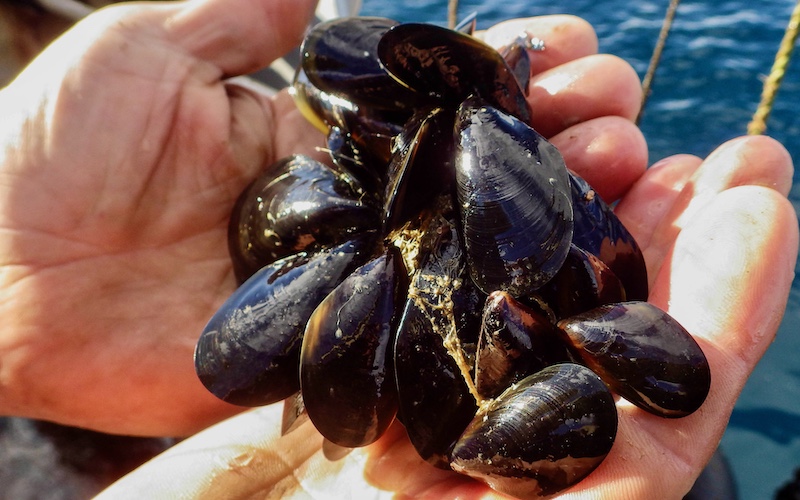

Once popular as snacks that could be freely harvested or bought cheaply (and known as ‘poor man’s oysters’), mussels are still one of the most affordable shellfish around.
Australian mussels are called blue mussels due to their dark blue, almost black, shells. New Zealand green mussels are par-cooked before being exported to Australia to satisfy quarantine restrictions. This initial cooking means they toughen up if recooked so they aren’t a suitable alternative to blue mussels.
Blue mussels are a good alternative for clams in most recipes (see video below). They’re one of the simplest seafoods to cook and once you know how to prepare mussels you can serve them in a wide range of cuisines.
You’ll need:
Here’s how to store mussels:
Here’s how to prepare mussels for cooking:
Here’s how to cook mussels:
Here’s how to shuck mussels to serve on the half shell:
Now you know how to prepare mussels you can make tiella Barese, cozze gratinate and stir-fry them with chilli jam (see video below).
Share page on:
Australian mussels are called blue mussels due to their dark blue shells. Because the shells are so dark they almost look black, they’re sometimes also known as black mussels.
No. New Zealand green mussels are par-cooked before being exported to Australia to satisfy quarantine restrictions. This initial cooking means they toughen up if recooked so they aren’t a suitable alternative to blue mussels.
No. Bivalves that live in a sandy environment (mainly clams) need to be purged to remove the sand before cooking. Mussels grow on ropes suspended in water, so don’t contain sand and don’t need purging.
Mussels are one of the easiest seafoods to prepare. Here’s how to prepare mussels for cooking: simply rub mussel shells together in your hands under cold running water to remove any barnacles. Then they’re ready for the pot.
Mussel shells have fibrous threads protruding from them. This is the byssus, generally called the ‘beard’, which attaches to the ropes on which they grow.
Some people debeard mussels before cooking. This tears the mussel meat and often leaves a little beard inside the shell. So I prefer the gentler approach of removing beards from cooked mussels once the shells are opened by gently pulling it away from the cooked meat. If shucking raw mussels to serve on the half shell, use kitchen scissors to snip the beard off the opened mussel.
No. There are often a few stubborn shells that don’t open when cooked and there’s a myth that says they should be discarded. This isn’t necessary as most are fine to eat. Use a blunt knife (such as a butter knife) to pry these open over the sink or a bowl (not over the other mussels). If they look and smell good, they’re fine to eat; if not, discard them. The nose knows.








